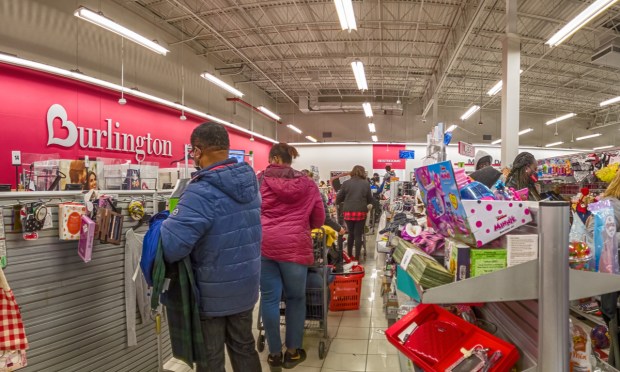Burlington Finds Product Assortment Resonates With Off-Price Consumer Demographic

Cash-crunched consumers looking for deals on off-price brands helped propel Burlington Stores to an almost double-digit sales increase, the company said Thursday (Aug. 24).
Burlington Stores revealed that its fiscal 2023 second-quarter total sales grew by 9% year over year (YoY), to $2.17 billion. Comparable store sales rose 4% YoY.
“Our merchants have done a nice job executing their strategy, but mixed or recognizable brands is much higher now than last year. And our values are significantly stronger,” said Michael O’Sullivan, CEO of Burlington Stores during the company’s second quarter earnings call.
However, O’Sullivan said, “Looking at the spring season as a whole, it is clear that the lower-income shopper, our core customer, is still under significant economic pressure. Based on the underlying year-to-date comp trend, we are narrowing our full-year comparable store sales guidance to a range of 3% to 4% versus 2022. It is possible that the trend will strengthen in the back half of the year, and if it does, then we are confident that we can chase it.”
This perspective aligns with PYMNTS research showing that linking living paycheck to paycheck with poverty is not accurate.
The truth is that a significant portion of households across various economic levels share this experience. According to a recent PYMNTS study, 48% of high-income households also follow this pattern. Influential factors including medical expenses, student loans, excessive discretionary spending, and other variables play a role. When living paycheck to paycheck, any unforeseen cost, even minor, can lead to financial strain for households.
Read more: A Paycheck-to-Paycheck Consumer Needs Faster Payouts
Consumers Are Looking for Deals
O’Sullivan also acknowledges the growing prominence of the off-price retail sector, which appears to be distancing itself from traditional retail models. Over the past year, off-price retailers have shown mid- to high-single-digit growth, in contrast to department and specialty stores that have generally trended down. This shift back to pre-pandemic trends is not entirely unexpected and signals a return to off-price retail gaining market share over brick-and-mortar competitors.
Within the off-price category, there has been a divergence in performance among retailers, particularly when viewed over multiple years. Burlington Stores falls toward the lower end of this performance range, a position attributed to differences in customer profiles.
Over the last 18 months, the economic challenges faced by lower-income shoppers due to rising living costs and reduced pandemic-era benefits have significantly impacted spending patterns. While Burlington’s core customer base comprises younger, lower-income, and ethnically diverse shoppers — which O’Sullivan notes as a valuable demographic — this group has encountered difficulties since early 2020, a pattern is observed among other retailers catering to similar customer segments.
However, despite the challenges, O’Sullivan finds encouragement in the success of off-price peers. This success aligns with the overarching direction of Burlington Stores’ strategic initiative, which O’Sullivan refers to as “Burlington 2.0,” which aims to reinforce the company’s off-price identity.
Burlington by the Numbers
In addition to the sales growth, the gross margin rate as a percentage of net sales improved to 41.7% from 38.9% in the second quarter of 2022, an increase of 280 basis points. Merchandise margin improved by 150 basis points, and freight expense improved by 130 basis points.
Net income amounted to $31 million, an increase from $12 million YoY. Adjusted net income showed even stronger growth, reaching $39 million, up from $23 million YoY. This adjustment accounted for an expense of $1.8 million linked to 62 recently acquired leases from Bed Bath & Beyond.

